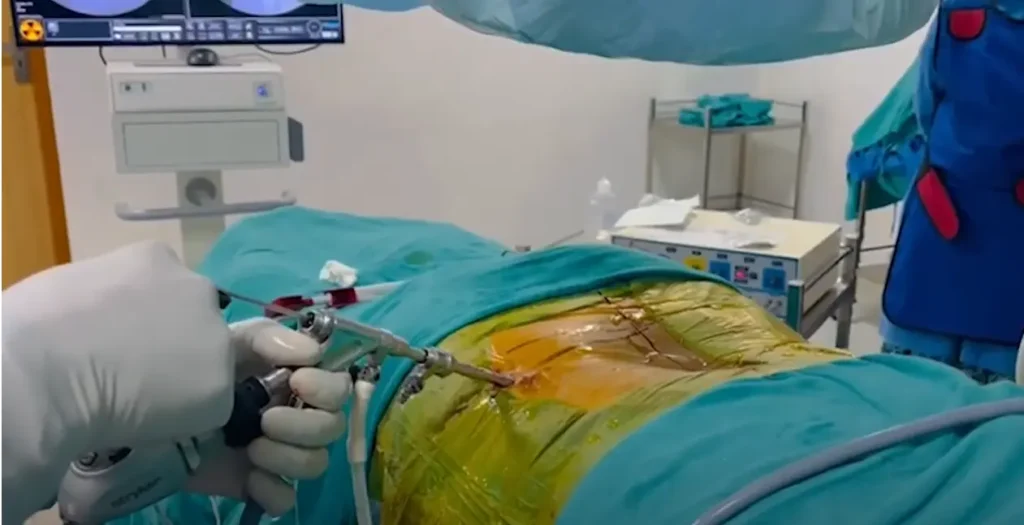Transforaminal endoscopic discectomy technique
The Transforaminal Endoscopic Spine System (TED) is an advanced procedure used in spine medicine to treat issues in the transforaminal region of the spine, precisely the disc space. During this procedure, small incisions are made on the back to access different parts of the spine, allowing targeted treatment for specific spinal column problems. TED benefits various medical treatments, including injections, nerve compression, discectomy, the Ramanovich method, and more.
TED is performed under local anesthesia and has been proven to be a safe and effective technique. It offers advantages such as shorter rehabilitation periods, reduced blood loss, trauma, and less scar tissue compared to conventional procedures. However, it is crucial that this procedure is conducted by an experienced spine surgeon who is familiar with the technique and capable of recognizing and avoiding potential challenges.
One of the advantages of TED is the direct visualization of the spinal pathology, which leads to reduced soft tissue trauma, less blood loss, quicker recovery, and preservation of adjacent anatomy. When performed by a skilled spine surgeon following specific steps, it can be a safe and effective method. However, it is essential to acknowledge that TED is a relatively novel procedure, and there may be risks for both the beginner spine surgeon and the patient.

